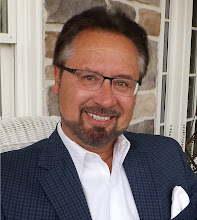 Ken Follett. Penguin. Published in 1989.
Ken Follett. Penguin. Published in 1989.My first exposure to Follett was in the early 80s with a trio of spy thrillers, Eye of the Needle, Triple, and The Key to Rebecca. I like the spy genre and though I didn't think Follett had the nuanced political and psychological depth of a LeCarre or Deighton, he delivered intrigue, twists, and turns at a Frederick Forsythe (Day of the Jackel) level. Smart, action-packed escapist reading!
Follett wrote The Pillars of the Earth in 1989 and I completely missed it. For 20 years. Once I've read an author a couple times and like him or her that usually doesn't happen. But it should have come as no surprise. In Pillars, Follett switched genres from international political thrillers to historical fiction with this 973 page tome. I'm sure his publisher was aghast when he brought the proposal to the table. Follett was undoubtedly told that this was a bad "self-branding" move for any author, that he would confuse and lost his core audience. I'm Exhibit One that his publisher was probably right in a business sense. But if Follett had listened, we would have missed out on a literary treat. It hasn't turned out too bad for Follett either, as Pillars is his backlist title that continues to sell the most copies every year.
So what prompted Follett to write a book that features a devout and godly monk who dreamed of building a cathedral to God's glory; the ups and downs of a couple of stone masons and their families; and some really rotten earls, barons, sherrifs, bishops and priests? Was it Follett's own act of devotion and religious fervor? In his preface he claims to be atheist despite a Plymouth Brethren upbringing. But he did have what can be described as a near religious experience on a business trip to Peterborough for the London Times. He had recently read a book on European architecture and was fascinated with Nikolaus Pevsner's description of all that went into the building of Gothic cathedrals. With an hour to spare before his train left for London, Follett took a tour of the Peterborough Cathedral and says he was instantly "enraptured." This began a personal hobby of visiting and studying cathedrals all over England and Europe.
Follett may have left modern politics behind in Pillars but not the politics of 12th Century Europe. With the death of King Henry, Stephen and Maude wage a civil war for the throne spanning decades, with a constant and ensuing political fallout for earls, cities, and counties. Even the building of a castle or cathedral became a political roller coast ride with access to lumber, stone or labor determined by which combatant won the last battle of the season and which barons and earls had the right allegiance to be rewarded or punished.
Follett shows Medieval churchmen at their superstitious and barbaric worst - and their enlightened, progressive, spiritual, and charitable best. I think he is very fair to represent the true spirituality of the Medieval - and modern - believer. He doesn't succumb to the temptation to paint crude caricatures. My own reading of Medieval history is cursory but from what little I know, Follett actually helps dispel the myth that these were simply "Dark Ages." Watching Jack - a stone mason and master builder - wrestle with how to make his cathedral roof taller but still safe and finally discover the pointed arch is a marvelous glimpse into the technological developments of the day.
Pillars is set around the building of the Kingsbridge Cathedral, but Follett takes us on a historically plausible side journey through France, over the Pyrenees, and into the Iberian Peninsula, where Medieval monks traveled to the library of Toledo, Spain, and were introduced to Euclid (his algebra and geometry play a role in the building of cathedrals), Plato, and other great writings from antiquity. Throughout the story Follett introduces the historical seeds that blossomed into the modern political mind and arena, from worker's and women's rights to the question of whether kings and nobility must answer to the law.
Toward the end of the book, Prior Philip, the stern, austere, kind, hard nosed, fair, loving hero of the story witnesses the assassination of Thomas Becket at Canterbury - carried out under the urging of his nemesis, Waleran, a bishop who made Machiavelli seem like an author of positive thinking and encouragement titles. Philip faces his ultimate test of faith, namely whether he will keep his faith in God and whether that faith in God has the efficacy to make the world a better place. As a reader, we have followed his life as orphan, monk, reformer, and builder for sixty years up to the year 1174 A.D. But the question he must face in the closing pages of Pillars is just as relevant today!







